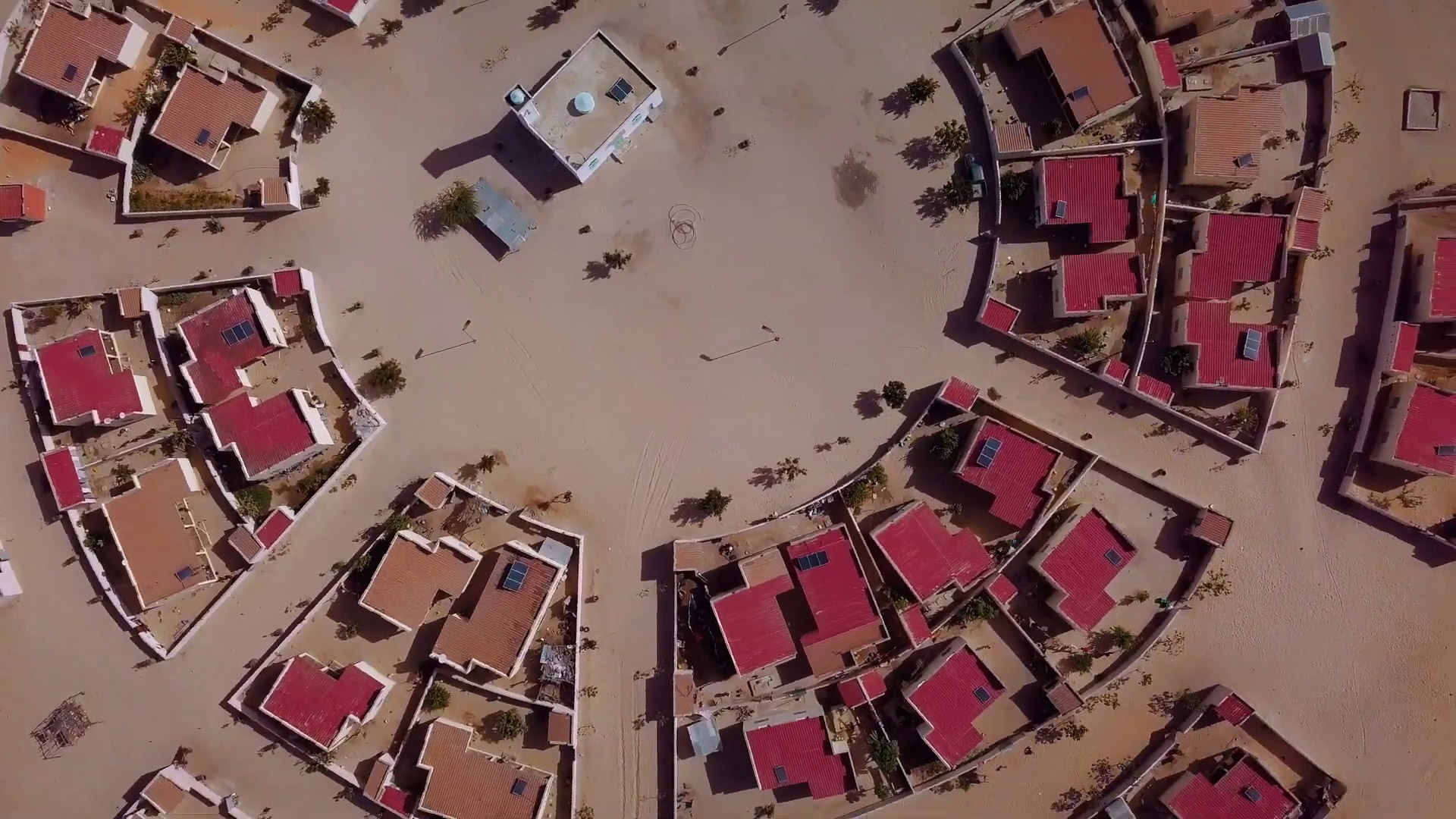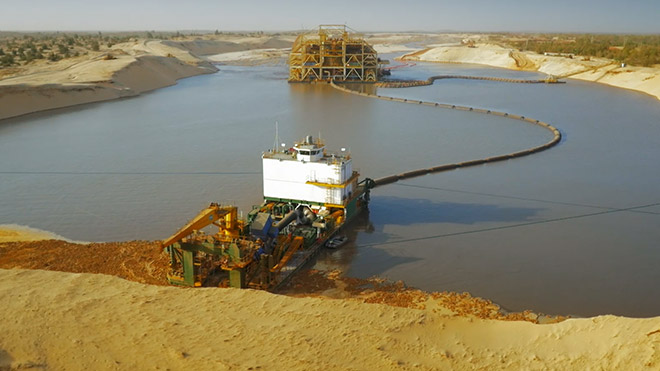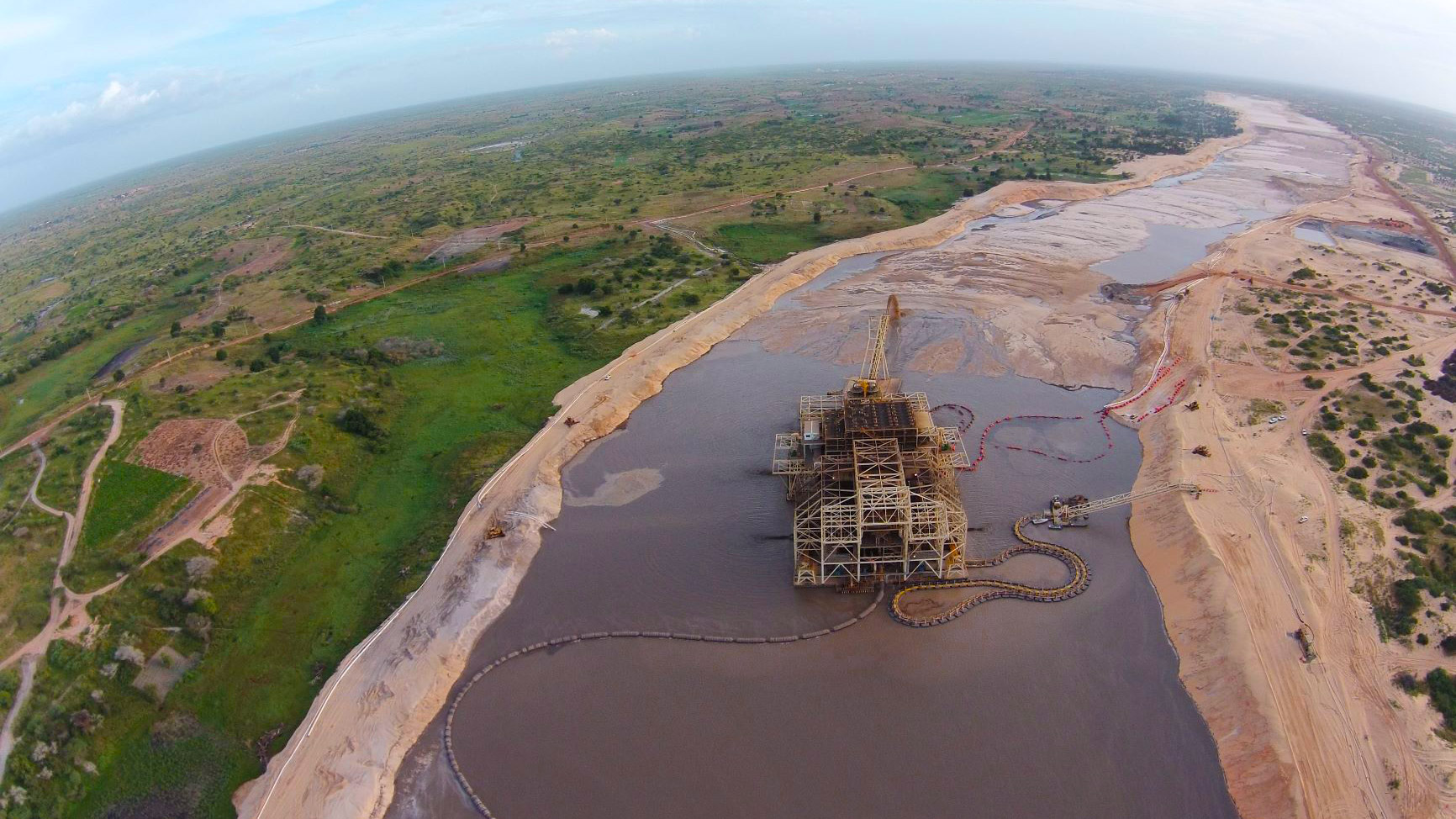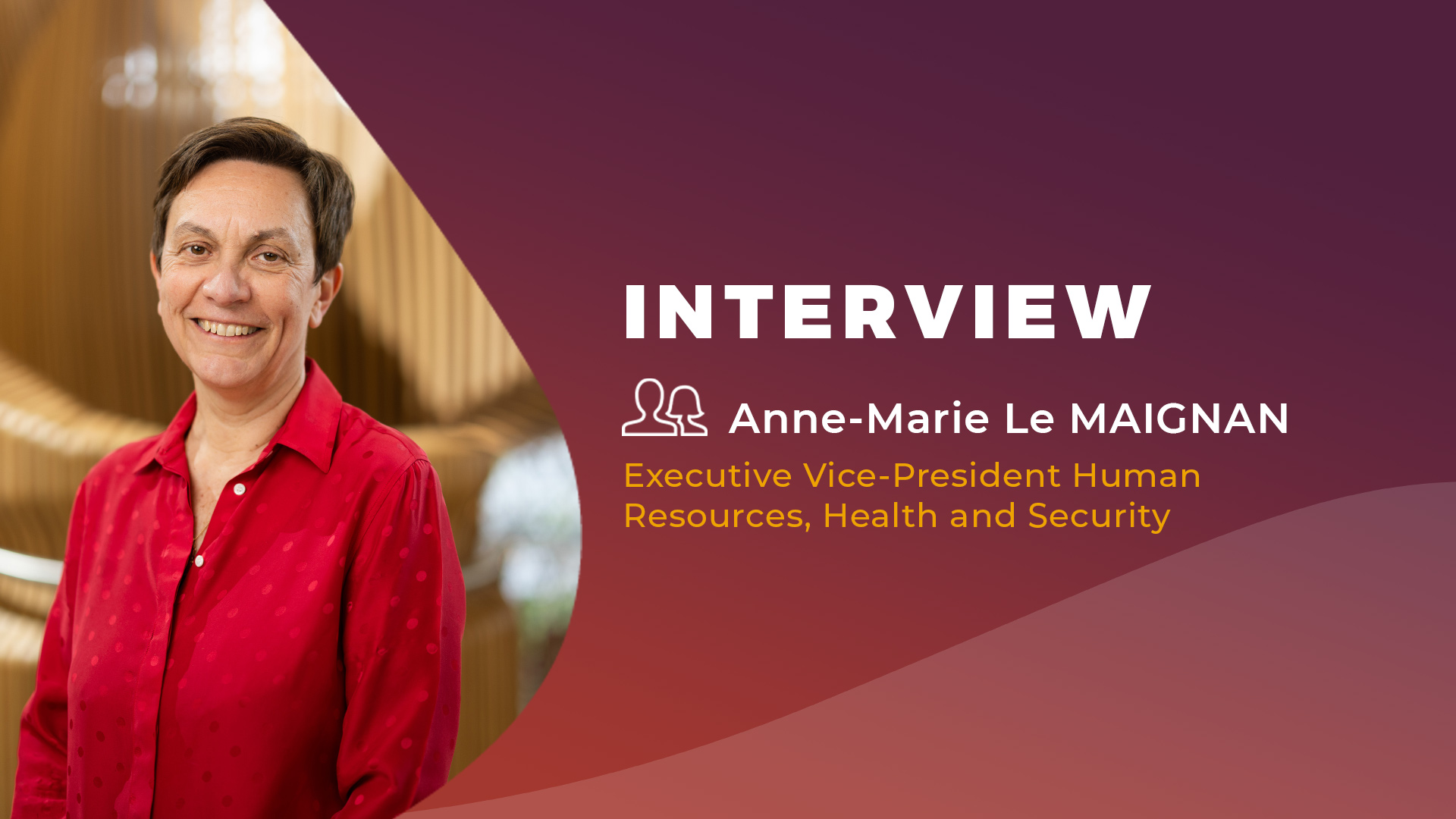Under a tent set up in Lompoul-sur-Mer, across from sandy dunes blackened by ilmenite, breakfast is served to a circle of guests, their feet buried in the sand. The meeting represents a key moment in the strategy pursued by Daour Dieng, a geologist who’s been with GCO from the start. He is here to convince investors, including Eramet’s, of the value held in the deposit. There are many who remember these important moments, including Jean-Michel Fourcade. Dispatched by the Group to participate in strategic discussions on our involvement in the TiZir project, he later became Chief Executive Officer of GCO during the production ramp-up.
An ancient stretch of sand…
The Grande Côte region, a stretch of coastline located 200 kilometers to the north of Dakar, Senegal, experienced an extraordinary natural phenomenon that left a tract of black mineral sand along its Atlantic façade. Its origin dates back to more than two billion years, when magma expelled by ancient volcanoes in eastern Senegal and a collision between continental plates produced the Mauritanide mountain chain. Altered by the local climate, fragments of these rocks were transported and washed clean by the Senegal river until they reached its mouth in Saint-Louis, where they were ejected into the ocean. The powerful sea currents acted as a crushing force, before depositing the sand along the expansive Grande Côte beach during a period of sea level rise. That was about 40,000 years ago. More recently, in the last 4000 years, the heaviest mineral fragments were compacted by the wind, while the lightest fragments were carried back out to sea. “What nature has given us, we are now processing using a sustainable development approach,” proudly notes Mouhamat Seck, head of the Mine Technical Services Departmen
With a low mineral content
Through this process, these rounded dunes so aptly described by writer David Diop* became blackened by the presence of ilmenite, along with rutile, leucoxene, and zircon. Not much of it was there, just around 1.5%…enough to delight the financial backers and excite the engineers called in to design an industrial facility that could make the project profitable.
Much like the Senegal river, the project has not always had an easy course. It has been fraught with challenges that are hardly imaginable today when you traverse the peaceful lands of the Thiès region, where the industrial site is located. A period all too familiar to Moctar Dia, who has been running the laboratory that analyzes the deposit since the exploration phase.
Earning the trust of the local communities
The first challenge was a societal one. The team had to show the highest officials in the country and the neighboring communities what this project could do for them, as it was replacing a separate reforestation project run by Eaux et Forêts du Sénégal, in cooperation with a Japanese team searching for carbon credits. They had to convince them that while water would need to be pumped in for the project, this wouldn’t have any impact on the water earmarked for Niayes, the largest agricultural region in the country. They had to explain to the communities that it wasn’t just hamlets or villages that would need to be relocated away from the concession, but cemeteries as well. A particularly sensitive subject. “The communities were not with us in the beginning,” Daour Dieng remembers soberly. “We had to assuage the people and even the government over this project. We did a lot of outreach, long before the start of construction, to demonstrate that the environmental footprint would be minimal, and that we would restore the land to the way it was before, or better even, in terms of planting and the quality of the reconstructed villages.” Community infrastructures now offer much-improved quality of life over what was there before. The land compensations (made in accordance with World Bank standards), the prospects in terms of jobs and training, the improved economic development, not just in the Thiès region (where Diogo is located), but in Senegal as a whole, ultimately convinced the communities and officials to grant a social license to operate. The only persistent myth relates to zircon, which some see as another kind of diamond… If only that were the case…

The titanium dioxide industry
At the time, and up until 2011, the Grande Côte Opérations (GCO) project was led by the Australian company MDL, before Eramet took a 50/50 stake in it through a joint venture, TiZir. A few years earlier (in 2008), Eramet had gotten into the titanium dioxide industry by acquiring Tinfos in Norway, whose TTI plant in Tyssedal melted down ilmenite. GCO would supply them with the ore after the furnace was refurbished. Under the leadership of Christel Bories, Eramet took over sole control of TiZir, and GCO along with it, in 2018.
In Diogo, the project advanced to the construction phase in May 2011, in less than three years. The tent camp was replaced with new accommodations. The number of employees and sub-contractors went from 70 to more than 2500 at its peak. Wolof, French, English, and many other languages could all be heard…
The sand dredger and the concentration plant
The industrial units are highly impressive. The first of them is “Yeene” (“Hope” in Wolof), the largest mining dredger in the world, which can devour 7,000 tons of sand in an hour—meaning that in one year, it can consume more than 50 million tons of the mineral fragments that were left here so long ago. The mining is good but the mineral content is low, which means that in order to be profitable, the project has to compensate with volume. The sand/water pulp is sucked up by the main pump, which is 1.20 m in diameter. Then, like a 320-meter sea snake, a hose relays it to the Wet Concentration Plant (WCP), an enormous steal castle that floats in the middle of an artificial basin six meters deep. The basin is yet another technical marvel, which Mouhamat Seck, who supervised the priming of the basin on January 26, 2014, remembers perfectly. “We were all stressed out that day when we opened the sluice gates…little by little the plant began to float.” All according to plan.

The land restored
The heavy mineral concentrate is then transported by truck to another plant (a land-based one, this time), the Mineral Separation Plant (MSP). Actually, it’s an assortment of five plants on six floors. “Much as the WCP generates volume, the MSP utilizes advanced techniques,” notes Sisifo Mdluli, the plant’s manager. Different operations are performed here at high temperatures, before the products are sifted and electrostatically and magnetically separated. Lastly, they are transported by train from a charming station in Meckhé, the home city of board chairman Daour Dieng, to storage facilities in Dakar. GCO has a great team of railway workers, as the company has been entrusted with managing part of the railroad.
“Yeene”, the sand dredger connected to the WCP, recovers the mineral content and forcefully expels the remaining 98%. The peculiar rig moves at 30 meters day, eight kilometers a year, over a stretch of dunes parallel to the Grande Côte beach. The non-mineral sand is used to restore the dunes as close to as they were before, after which they are seeded with plant varieties chosen by the communities for their economic value.
Sustainable development
On en revient au sujet principal : la mine nomade traverse des zones de cultures et des villages qu’il faut réinstaller en vertu de la concession minière accordée par l’Etat sénégalais.
Returning to the main topic, since the wandering mine goes through villages and farming areas, these need to be relocated pursuant to the mining concession granted by the Senegalese government. The resettlement plan was developed under a consensual partnership with regional officials and communities. Respectful dialog was maintained by the CSR team, which counts two Ibrahimas among its ranks: Ibrahima Diop and Ibrahima Massaly. After an initial resettlement of 35 households in 2016, 85 other families from Foth were re-housed in a new village in 2019. Residents have all had positive things to say about the methods and results. “The goal of harmonious economic development, which creates value for everyone, is a reality,” note Charles Nouel, head of the Mineral Sands Business, and Michel Privé, CEO of GCO.
Other villages are preparing for the day when the dredger and the WCP pass through in the next few years. All of them are waiting for it knowing that the land will be returned, stable and reforested, back to the communities, who will themselves be resettled. Everyone understands that the value created by GCO will not only benefit everyone, but will contribute much more than jobs—a little thing called sustainable development;
* At Night All Blood Is Black, a novel by David Diop. Winner of the Prix Goncourt des Lycéens in 2018.



